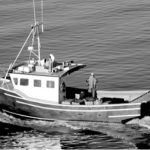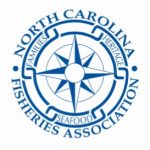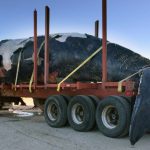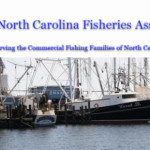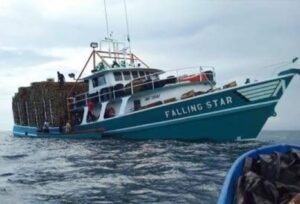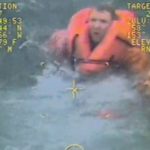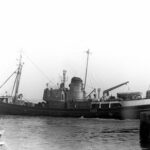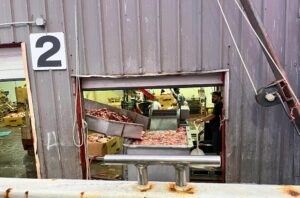Monthly Archives: January 2017
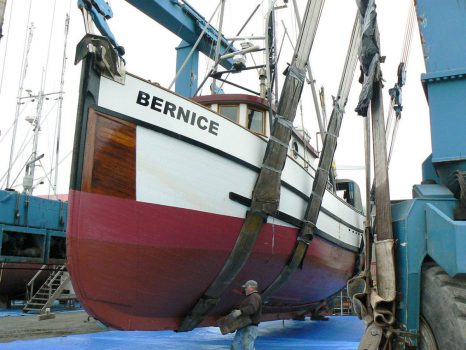
Lift cable snaps, boat slips at Port Townsend marina
A cable snapped on a Port of Port Townsend boat lift while it was lowering a boat into the Boat Haven Marina, causing minor property damage and a small fuel spill in the marina.The cable broke just after 9 a.m. Monday morning. The Port of Port Townsend’s smaller boat lift was being used to lower a 56-foot fishing vessel, Bernice, back into the marina waters, according to Rodger Slade of Towboat U.S., formerly Vessel Assist of Port Hadlock. “It didn’t drop the boat but it was kind of at an awkward angle,” said Abigail Berg, the port’s finance director, speaking on behalf of Greg Englin, port operations manager. Read the story here 16:11
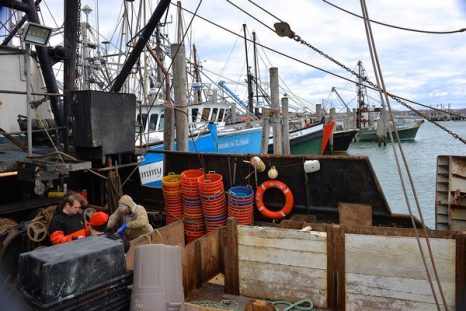
Montauk Fishermen Worry About Impacts From Proposed Wind Farm
A 12-to-15-turbine wind farm still will have to navigate a long and arduous regulatory approval process before it can be constructed in the waters between Montauk and Nantucket. Some Montauk fishermen say they are worried about the impacts of the turbines to be built about 30 miles offshore of their home port. “The location is definitely a concern, because of the fishery that takes place there,” said Chris Scola, a Montauk sea scallop harvester. “The draggers do a lot of fluking there. They do a lot of yellowtail flounder there. It’s a very important place for sportfishermen, too— it’s really the only place that still has cod consistently.” Montauk fishermen say they were not included in the conversations held five years ago, when Deepwater Wind and federal regulators were discussing the regions that would be leased to the company for wind farm construction. “They created a fishery advisory group … and Rhode Island and Massachusetts fishermen said, ‘You can’t go here, because we all fish here—that’s important to us,’ and they removed all these certain [areas] from the map,” said Bonnie Brady, director of the Long Island Commercial Fishing Association. “They never talked to New York. No one from Long Island was invited, as far as I’m aware.” Read the full story here 15:53

Ventura FD put out Series of Arson Fires – Commercial fishing vessel a total loss
On January 31st at 1:46 AM, Ventura City firefighters responded to a report of a boat fire in the Ventura Harbor. Upon arrival responding crews found a 50 foot commercial fishing boat 6 feet off the ground in dry-dock fully involved in. Fire suppression efforts initially concentrated on protecting an adjacent building and boat from the flames. Firefighters were able to suppress the bulk of the flames on the burning boat within 20 minutes of arrival. The boat, however, was a complete loss. Three additional small fires were discovered in the same boat yard at varying intervals throughout the firefighting operations: A fire involving a propane tank of a fork lift, a debris fire in a workshop area and a smoldering rag on the stern of another boat in dry-dock. Read the story here 15:32
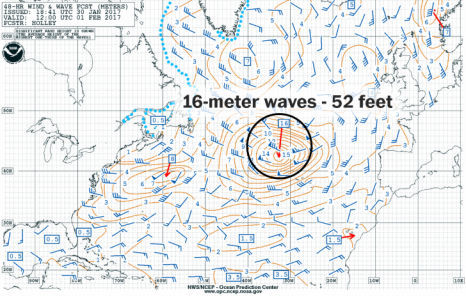
Monster winter storm expected to churn up 50-foot waves in the open Atlantic
A monster winter storm is taking shape along the East Coast this week, and the National Weather Service is calling for 50-foot waves in the Atlantic by Tuesday. That’s not just a shot-in-the-dark — if you add up all of the forecast data, there’s over a 90 percent chance that wave heights will exceed 30 feet. This storm is the same trough of low pressure that dipped into the Mid-Atlantic on Sunday and dropped a few inches of snow in the D.C. area. On Monday morning, the storm was just 1005 millibars — barely a low pressure system at all. But over the next 48 hours, the storm is expected to drop to 968 millibars. On its southern side, winds will easily reach Category 1 hurricane-strength. That will churn up waves of 16 meters, which is around 50 feet — at least that’s what the Ocean Prediction Center is forecasting. They’re calling the storm “extremely dangerous low pressure.” Click here for more imagery 13:55
‘Phenomenal’ shrimp season still playing out in the Lowcountry
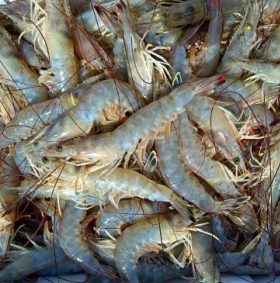 It’s the cold end of January and that means the end of commercial shrimping is..umm..maybe not even going to happen. It’s phenomenal, said Mel Bell, S.C. Department of Natural Resources fisheries management director. “This is the latest I’ve heard us close. The size they’re bringing in out there we’ve never seen before” this time of year, he said. Not only that, but “provisional” waters will remain open another week. Those are waters roughly beyond two miles out, between the nearshore state waters and federal waters even farther out. And federal waters don’t close at all unless it’s a bad winter. Lowcountry boats have been slaying them in those provisional and federal waters. “Definitely,” said Shem Creek shrimper Tommy Edwards, who has been pulling in shrimp so big they’re weighing out at 13 to the pound. “We’re doing better now than we were when the season was going strong. Right now we’re looking at shrimping all the way through February. We’re not going to close if conditions are right.” Read the story here 13:40
It’s the cold end of January and that means the end of commercial shrimping is..umm..maybe not even going to happen. It’s phenomenal, said Mel Bell, S.C. Department of Natural Resources fisheries management director. “This is the latest I’ve heard us close. The size they’re bringing in out there we’ve never seen before” this time of year, he said. Not only that, but “provisional” waters will remain open another week. Those are waters roughly beyond two miles out, between the nearshore state waters and federal waters even farther out. And federal waters don’t close at all unless it’s a bad winter. Lowcountry boats have been slaying them in those provisional and federal waters. “Definitely,” said Shem Creek shrimper Tommy Edwards, who has been pulling in shrimp so big they’re weighing out at 13 to the pound. “We’re doing better now than we were when the season was going strong. Right now we’re looking at shrimping all the way through February. We’re not going to close if conditions are right.” Read the story here 13:40
Bay of Fundy Inshore Fishermen’s Association gets another stab at Minas Passage tidal turbine
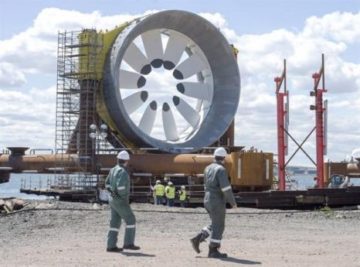 After an application it filed last July, the Bay of Fundy Inshore Fishermen’s Association is getting another day in court. Justice M. Heather Robertson is presiding over a hearing on Feb. 1-2 in Halifax that will review the environment minister’s decision to authorize an Environmental Effects Monitoring Program. The EEMP was the final requirement the proponents needed before they could deploy an in-stream tidal energy device, or turbine, in the Bay of Fundy’s Minas Passage. According to documents filed with the court, BoFiFA claims that environment minister Margaret Miller erred in the law and acted unreasonably in her decision on June 20, 2016 by proceeding contrary to the requirements of the original EA in 2009. Named in the application are the Minister of Environment, the Attorney General, the Fundy Ocean Research Centre for Energy Ltd. (FORCE) and Cape Sharp Tidal Ventures Ltd. Link 11:14
After an application it filed last July, the Bay of Fundy Inshore Fishermen’s Association is getting another day in court. Justice M. Heather Robertson is presiding over a hearing on Feb. 1-2 in Halifax that will review the environment minister’s decision to authorize an Environmental Effects Monitoring Program. The EEMP was the final requirement the proponents needed before they could deploy an in-stream tidal energy device, or turbine, in the Bay of Fundy’s Minas Passage. According to documents filed with the court, BoFiFA claims that environment minister Margaret Miller erred in the law and acted unreasonably in her decision on June 20, 2016 by proceeding contrary to the requirements of the original EA in 2009. Named in the application are the Minister of Environment, the Attorney General, the Fundy Ocean Research Centre for Energy Ltd. (FORCE) and Cape Sharp Tidal Ventures Ltd. Link 11:14

Nunavut fishery gets a big boost in turbot quotas, expects a $7M to $8M increase in revenue
Last week, the federal Department of Fisheries and Oceans increased the total allowable catch for 2017 and 2018 by 575 tonnes in each of the two fishing areas adjacent to Baffin Island. “What it means, of course, if you’re looking at revenue on that amount of product, is somewhere between $7 million to $8 million of increase in revenue,” said Jerry Ward, the director of fisheries at Qikiqtaaluk Corporation. “Plus, it will also provide more jobs throughout the year and so on. So we’re quite pleased with it.” The limits on turbot in zone 0A, northeast of Baffin Island, was upped to 8,575 tonnes, with Nunavut fishermen receiving all of the increase. The limit in zone 0B, off Baffin Island’s southeast coast, was increased to 7,575 tonnes. Nunavut will receive 90 per cent of that increase, with Inuit fishers in Nunavik receiving the other 10 per cent. Read the story here 10:17
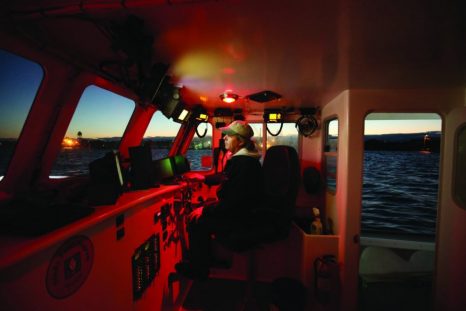
The early shift: New Jersey People working while you’re still asleep
The early bird may catch the worm. But it certainly isn’t catching enough zzz’s. That’s the moral of the story for those who work during the wee hours. We caught up with a few New Jersey residents who regularly rise before the sun – a commercial fisherman, a waitress and an ER nurse – to chat about the challenges that come with working while the rest of us are in bed and find out why they stick with it. To make a profit as a commercial gillnet fisherman, you’ve got to sacrifice sleep. For 35 years, Kevin Wark’s schedule has been roughly the same: two nights at sea, one on land. But no matter how many times he toils through his 30-hour shifts, with little more than a 15-minute nap, Wark’s body has never grown accustomed to the effects of sleep deprivation. Read the story here 09:25
Man charged with punching police canine during suspect pursuit
 A 54-year-old Coos Bay man, one of three arrested on Friday afternoon after police responded to a report of criminal trespass in progress, is accused of punching a police canine as the animal was assisting in his apprehension. Deputies from the Coos County Sheriff’s Office arrived at an address on Gurney Drive, near North Bend, at 12:32 p.m. on Friday, and upon arrival learned of “an ongoing property line dispute.” One deputy saw a man, later identified as Steven R. O’Daniels, 38, of North Bend walk away from the deputy and into a shop-style building on the property. O’Daniels’ wife remained with the deputy “to explain her side of the story.” When a records check revealed O’Daniels had two outstanding warrants in Clatsop County for failure to appear on commercial fishing crimes, the deputy approached the shop and called out for O’Daniels to tell him he is under arrest. Deputies located O’Daniels near Waymire Lane with assistance from Odin and several callers. O’Daniels was arrested on two outstanding warrants and held at Coos Count jail on $1 million bail. Read the story here 08:46
A 54-year-old Coos Bay man, one of three arrested on Friday afternoon after police responded to a report of criminal trespass in progress, is accused of punching a police canine as the animal was assisting in his apprehension. Deputies from the Coos County Sheriff’s Office arrived at an address on Gurney Drive, near North Bend, at 12:32 p.m. on Friday, and upon arrival learned of “an ongoing property line dispute.” One deputy saw a man, later identified as Steven R. O’Daniels, 38, of North Bend walk away from the deputy and into a shop-style building on the property. O’Daniels’ wife remained with the deputy “to explain her side of the story.” When a records check revealed O’Daniels had two outstanding warrants in Clatsop County for failure to appear on commercial fishing crimes, the deputy approached the shop and called out for O’Daniels to tell him he is under arrest. Deputies located O’Daniels near Waymire Lane with assistance from Odin and several callers. O’Daniels was arrested on two outstanding warrants and held at Coos Count jail on $1 million bail. Read the story here 08:46
Controversial flounder plan could get final approval Thursday
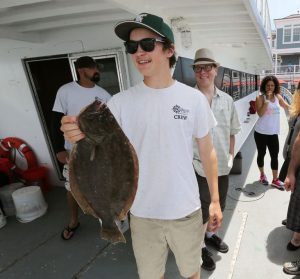 A proposal to drastically reduce this year’s summer flounder catch could get final approval at a federal regulatory meeting Thursday morning in Virginia. The Atlantic States Marine Fisheries Committee is scheduled consider strategies that would reduce the summer flounder harvest by up to 41 percent coast-wide and implement tighter restrictions on bag and size limits for recreational fishermen. It’s a proposal that has been met with widespread criticism in New Jersey—from recreational fishermen, both U.S. Senators, multiple other politicians and even the head of the state Department of Environmental Protection. In August, the ASMFC and the Mid-Atlantic Fishery Management Council set the summer flounder harvest limit at an all-time low in response to the most recent stock assessment, and, last month, the regulatory bodies approved a set of options to meet that goal. Read the rest of the story here 21:27
A proposal to drastically reduce this year’s summer flounder catch could get final approval at a federal regulatory meeting Thursday morning in Virginia. The Atlantic States Marine Fisheries Committee is scheduled consider strategies that would reduce the summer flounder harvest by up to 41 percent coast-wide and implement tighter restrictions on bag and size limits for recreational fishermen. It’s a proposal that has been met with widespread criticism in New Jersey—from recreational fishermen, both U.S. Senators, multiple other politicians and even the head of the state Department of Environmental Protection. In August, the ASMFC and the Mid-Atlantic Fishery Management Council set the summer flounder harvest limit at an all-time low in response to the most recent stock assessment, and, last month, the regulatory bodies approved a set of options to meet that goal. Read the rest of the story here 21:27
Southeast Alaska winter troll season slow
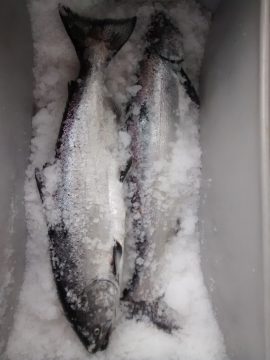 Commercial troll fishing for king salmon in Southeast Alaska this winter is not like it has been the last few years. The troll fleet catch and the number of boats out fishing are both well down from last year and also below the five and ten-year averages. By late January, the catch had neared 8,000 Chinook, with more than half of those kings landed in the waters around Sitka Sound. Eight thousand is just one quarter of what the catch was at this time last year.“I would say that the past three years have been phenomenal for the troll fishery so seeing a decrease now doesn’t necessarily mean that the fishery’s terrible, it just means that we’re going back to lower averages,” said Rhea Ehresmann is assistant troll management biologist with the Alaska Department of Fish and Game. Read the story here 19:07
Commercial troll fishing for king salmon in Southeast Alaska this winter is not like it has been the last few years. The troll fleet catch and the number of boats out fishing are both well down from last year and also below the five and ten-year averages. By late January, the catch had neared 8,000 Chinook, with more than half of those kings landed in the waters around Sitka Sound. Eight thousand is just one quarter of what the catch was at this time last year.“I would say that the past three years have been phenomenal for the troll fishery so seeing a decrease now doesn’t necessarily mean that the fishery’s terrible, it just means that we’re going back to lower averages,” said Rhea Ehresmann is assistant troll management biologist with the Alaska Department of Fish and Game. Read the story here 19:07
Price spikes for jumbo shrimp blamed on Gulf of Mexico dead zone
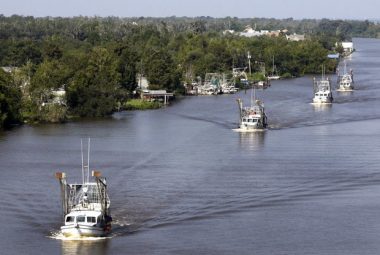 Every spring and summer when the low-oxygen dead zone forms off Louisiana’s coastline, the price of jumbo shrimp briefly spikes, affecting Gulf of Mexico fishers, consumers and seafood markets, according to a new study published Monday (Jan. 30) in the Proceedings of the National Academy of Sciences. And the price for smaller shrimp generally falls. The positive effect of the price increase on jumbo shrimp for Gulf commercial shrimpers are fleeting, however. That’s because the rise often triggers increased imports of large shrimp from foreign producers, including farm-raised shrimp, which quickly drive down prices. The dead zone is an area of low oxygen — with levels of oxygen at or below 2 parts per million — that scientists define as hypoxia. Freshwater rich in nitrogen and phosphorus from Midwest farms and from nutrient-rich sewage from cities and rural areas enters the Gulf each spring and summer, forming a freshwater layer over the Gulf’s saltier sea water. Read the full story here 18:41
Every spring and summer when the low-oxygen dead zone forms off Louisiana’s coastline, the price of jumbo shrimp briefly spikes, affecting Gulf of Mexico fishers, consumers and seafood markets, according to a new study published Monday (Jan. 30) in the Proceedings of the National Academy of Sciences. And the price for smaller shrimp generally falls. The positive effect of the price increase on jumbo shrimp for Gulf commercial shrimpers are fleeting, however. That’s because the rise often triggers increased imports of large shrimp from foreign producers, including farm-raised shrimp, which quickly drive down prices. The dead zone is an area of low oxygen — with levels of oxygen at or below 2 parts per million — that scientists define as hypoxia. Freshwater rich in nitrogen and phosphorus from Midwest farms and from nutrient-rich sewage from cities and rural areas enters the Gulf each spring and summer, forming a freshwater layer over the Gulf’s saltier sea water. Read the full story here 18:41

A Maine lobsterman brings up a serious issue. What to do with expired marine distress flares
After a lobsterman called her attention to unsafe and environmentally hazardous practices, a state representative is proposing a formal system for disposal of expired marine distress flares. It began with a simple question this past summer from Bob Perry, a Bailey Island lobsterman who was telling his sister over coffee one morning that he was not sure where he could dispose of old flares. The flares, which expire after 42 months, employ pyrotechnic chemicals and are classified as hazardous waste that cannot be buried in a landfill. “I was telling her, ‘I’ve got these flares, and I’ve got no idea what to do with them,’” Perry said last week. With the exception of smaller boats and specific recreational uses, existing law mandates that large vessels must be equipped with visual distress signals, most of which use pyrotechnic chemicals to emit a bright emergency flare, according to the Boater’s Guide to Maine Laws and Responsibilities. “I can’t be the only one on the coast of Maine that doesn’t know how to get rid of them,” he said. Read the story here 17:10
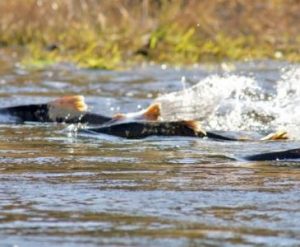
Feds Facing Order to Redirect Klamath River Water for Salmon
Two Native American tribes sued the U.S. Bureau of Reclamation last year, claiming its bungled management of Klamath River waterways allowed a deadly parasite to infect 91 percent of endangered juvenile Coho and Chinook salmon. The Yurok and Hoopa Valley Tribes say they depend on the salmon for subsistence, income and for traditional ceremonies that define their people. Lawyers for the federal government and an industry group of farmers and ranchers argue that diverting water to help salmon will harm businesses that support local jobs and communities and threaten another set of endangered fish, the shortnose sucker and Lost River sucker. In separate complaints against the federal government, the tribes say infection rates caused by the deadly parasite C. shasta, should have required the bureau to review its Klamath Irrigation Project’s impact on threatened salmon two years ago, but the bureau failed to take action in violation of the Endangered Species Act.During a hearing Friday, U.S. District Judge William Orrick III agreed the bureau should have reviewed the project when infection rates climbed to 81 percent in 2014 and 91 percent in 2015, well beyond the maximum 49 percent estimated in a 2013 biological opinion issued by co-defendant National Marine Fisheries Service. Read the story here 16:47
Five fishermen rescued from trawler before it sank off Irish coast
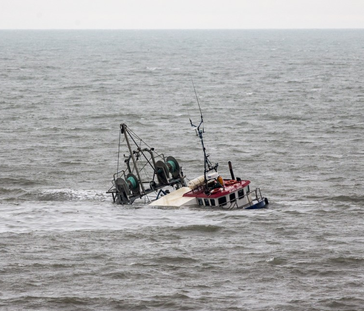 Five crew members had to be rescued from a trawler after it ran aground off Balbriggan in north Dublin early this morning. The 12 metre vessel became disabled at sea and was blown ashore, becoming lodged on a sandbank. The alarm was raised at 5.20am and Dublin coastguard coordinated the rescue. One inshore lifeboat and two all-weather lifeboats were sent to the scene. The Rescue 116 Coast guard helicopter was also involved in the operation. This morning the boat, called the Atlantic Osprey, could be seen half submerged in the sea south of Balbriggan. The wooden hull vessel had been fishing for razor clams when the incident occurred. Read the rest of the story here 16:02
Five crew members had to be rescued from a trawler after it ran aground off Balbriggan in north Dublin early this morning. The 12 metre vessel became disabled at sea and was blown ashore, becoming lodged on a sandbank. The alarm was raised at 5.20am and Dublin coastguard coordinated the rescue. One inshore lifeboat and two all-weather lifeboats were sent to the scene. The Rescue 116 Coast guard helicopter was also involved in the operation. This morning the boat, called the Atlantic Osprey, could be seen half submerged in the sea south of Balbriggan. The wooden hull vessel had been fishing for razor clams when the incident occurred. Read the rest of the story here 16:02

Further proof El Niños are fueled by deep-sea geological heat flow
The 2014-2017 El Niño “warm blob” was likely created, maintained, and partially recharged on two separate occasions by massive pulses of super-heated and chemically charged seawater from deep-sea geological features in the western North Pacific Ocean. This strongly supports the theory all El Niños are naturally occurring and geological in origin. Climate change / global warming had nothing to do with generating, rewarming, intensifying, or increasing the frequency of the 2014-2017 El Niño or any previous El Niño. If proven correct, this would revolutionize climatology and key aspects of many interrelated sciences such as oceanography, marine biology, glaciology, biogeochemistry, and most importantly meteorology. Information supporting a geological origin of El Niños is diverse, reliable, and can be placed into five general categories as follows,,, Read the article here 13:19
The idea that “the public” will use Global Fishing Watch seems doubtful
 At John Kerry’s 2014 “Our Ocean” conference, a tuxedoed Leonardo DiCaprio introduced a new technology that promised to end illegal fishing across the globe. Global Fishing Watch boasted real-time monitoring of the world’s ships. This machine-learning spy tool was the result of a collaboration between the conservation advocacy organization Oceana, the satellite surveillance firm SkyTruth, and Google. After it collects and maps vessel location data transmitted from onboard satellite tracking devices, the program organizes all data points on a user-friendly Internet platform. For the first time in history, all fishing activity is recorded–even on the high seas that lie outside national jurisdictions. With Global Fishing Watch’s all-seeing gaze, states can adjudicate crimes to which they were previously blind. But the idea that “the public” will use Global Fishing Watch seems doubtful. The web platform lacks common features without which vigilantes would need a lot of training: pop-ups of helpful tips on what to watch for, alerts to specific hot-spots, built-in reporting mechanisms, or forums for users to share their experiences. Worse, those who the technology could most benefit–local fishers forced to compete with larger illegal ships–often do not have access to a decent Internet connection. If Global Fishing Watch is unlikely to be used by ordinary citizens of the countries most affected by illegal fishing, why is it marketed like a neighborhood watch tool? Read the story here 11:27
At John Kerry’s 2014 “Our Ocean” conference, a tuxedoed Leonardo DiCaprio introduced a new technology that promised to end illegal fishing across the globe. Global Fishing Watch boasted real-time monitoring of the world’s ships. This machine-learning spy tool was the result of a collaboration between the conservation advocacy organization Oceana, the satellite surveillance firm SkyTruth, and Google. After it collects and maps vessel location data transmitted from onboard satellite tracking devices, the program organizes all data points on a user-friendly Internet platform. For the first time in history, all fishing activity is recorded–even on the high seas that lie outside national jurisdictions. With Global Fishing Watch’s all-seeing gaze, states can adjudicate crimes to which they were previously blind. But the idea that “the public” will use Global Fishing Watch seems doubtful. The web platform lacks common features without which vigilantes would need a lot of training: pop-ups of helpful tips on what to watch for, alerts to specific hot-spots, built-in reporting mechanisms, or forums for users to share their experiences. Worse, those who the technology could most benefit–local fishers forced to compete with larger illegal ships–often do not have access to a decent Internet connection. If Global Fishing Watch is unlikely to be used by ordinary citizens of the countries most affected by illegal fishing, why is it marketed like a neighborhood watch tool? Read the story here 11:27
In 1895 a historian urged us to modernize our fish products and speed them to market
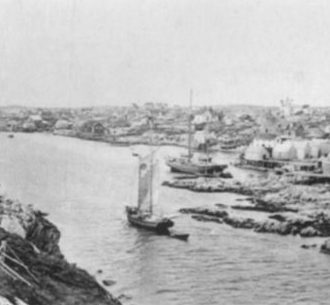 Lawyer, judge, historian and essayist — and son of Port de Grave — Daniel Prowse must surely have been smacking his lips when he wrote about our seafood in a concluding portion of his 1895 history. It was all about freshness and the abundance we had here and how we could access better markets. The railway, speeding from the east coast of our island to the west coast to meet a fast boat on the southwest corner would make it possible for us to earn big, new money from seafood hungry New Yorkers. Rapturously Prowse wrote: “Frozen cod and most delicious cod’s tongues, fresh every morning, will be transported from our shores!” I will admit that it stretches credulity to pair any judge with the adverb “rapturously,” however, I think it’s fair to say Prowse loved Newfoundland. And he always wanted us to do more and better with what we had. Good read! Read the story here 09:53
Lawyer, judge, historian and essayist — and son of Port de Grave — Daniel Prowse must surely have been smacking his lips when he wrote about our seafood in a concluding portion of his 1895 history. It was all about freshness and the abundance we had here and how we could access better markets. The railway, speeding from the east coast of our island to the west coast to meet a fast boat on the southwest corner would make it possible for us to earn big, new money from seafood hungry New Yorkers. Rapturously Prowse wrote: “Frozen cod and most delicious cod’s tongues, fresh every morning, will be transported from our shores!” I will admit that it stretches credulity to pair any judge with the adverb “rapturously,” however, I think it’s fair to say Prowse loved Newfoundland. And he always wanted us to do more and better with what we had. Good read! Read the story here 09:53
American Samoa Governor Lolo Moliga – US Sanctuary Program cannot dictate how territorial government uses local waters
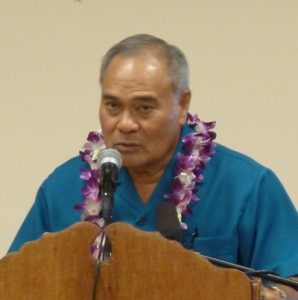 The governor said he met with officials of the National Marine Sanctuary Foundation and explained to them the position of the legislature and the executive branch concerning federal oversight of areas included in the Sanctuary of American samoa. He said it’s not that American Samoa is against conservation, rather it’s the way that the federal government has taken over jurisdiction of local waters included in the sanctuary that he has a problem with. Waters included in the marine Sanctuary of American Samoa are not open for commercial fishing, and there are also restrictions on take for subsistence fishing. Speaking at a cabinet meeting the governor also said that the Attorney General will fight American Samoa’s lawsuit against the US government to take back control of local waters. link 09:20
The governor said he met with officials of the National Marine Sanctuary Foundation and explained to them the position of the legislature and the executive branch concerning federal oversight of areas included in the Sanctuary of American samoa. He said it’s not that American Samoa is against conservation, rather it’s the way that the federal government has taken over jurisdiction of local waters included in the sanctuary that he has a problem with. Waters included in the marine Sanctuary of American Samoa are not open for commercial fishing, and there are also restrictions on take for subsistence fishing. Speaking at a cabinet meeting the governor also said that the Attorney General will fight American Samoa’s lawsuit against the US government to take back control of local waters. link 09:20
Oregon did the right thing in backing off gillnet ban on the main Columbia River. Washington state should too.
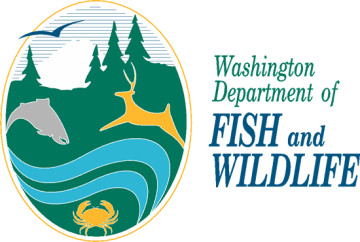 The Oregon Fish and Wildlife Commission is to be commended for recognizing that a 2013 policy dictated by former Gov. John Kitzhaber to kick commercial salmon fishing off the Columbia River has failed. It isn’t just Lower Columbia River residents who think so. Bobby Levy, former commission chair, commented on Facebook, “Oregon Fish and Wildlife commissioners did the fair and right thing! I applaud you!!” Levy led the commission in 2012 and 2013 when the two fish and wildlife commissions of Oregon and Washington state headed down the path to implementing the Kitzhaber scheme. Never fully thought out, gutting a centurylong tradition of supplying local consumers with some of the salmon we support with our taxes and electric rates was largely the product of intense lobbying by one subset of recreational fishing, embodied by the Northwest Sportsfishing Industry Association. A long-successful alliance between different salmon-fishing interests was cast aside, resulting in a loss of important unified advocacy for salmon recovery in the Columbia estuary and basin. Evicting gillnetters from the main stem of the Columbia by the end of 2016 was premised on a number of assumptions, including: Read the rest of the op-ed here 08:29
The Oregon Fish and Wildlife Commission is to be commended for recognizing that a 2013 policy dictated by former Gov. John Kitzhaber to kick commercial salmon fishing off the Columbia River has failed. It isn’t just Lower Columbia River residents who think so. Bobby Levy, former commission chair, commented on Facebook, “Oregon Fish and Wildlife commissioners did the fair and right thing! I applaud you!!” Levy led the commission in 2012 and 2013 when the two fish and wildlife commissions of Oregon and Washington state headed down the path to implementing the Kitzhaber scheme. Never fully thought out, gutting a centurylong tradition of supplying local consumers with some of the salmon we support with our taxes and electric rates was largely the product of intense lobbying by one subset of recreational fishing, embodied by the Northwest Sportsfishing Industry Association. A long-successful alliance between different salmon-fishing interests was cast aside, resulting in a loss of important unified advocacy for salmon recovery in the Columbia estuary and basin. Evicting gillnetters from the main stem of the Columbia by the end of 2016 was premised on a number of assumptions, including: Read the rest of the op-ed here 08:29
Labour Relations Board Hearing Tuesday into release of FFAW membership list
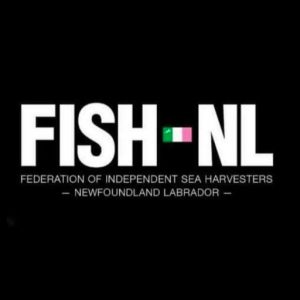 The Federation of Independent Sea Harvesters of Newfoundland and Labrador (FISH-NL) welcomes a hearing called by the Labour Relations Board over the FFAW’s failure to release its membership list of inshore fish harvesters. “The lengths the FFAW has taken to inflate and withhold its membership list is yet another act of crookery,” says Ryan Cleary, President of FISH-NL. “We look forward to being able to dig into their list.”The hearing is scheduled to take place from 9:30 to 12:30 on Tuesday, Jan. 31st at the Labour Relations Board Hearings Room, 1st floor, Beothuk Building, 20 Crosbie Place in St. John’s. Read the full press release here 07:49
The Federation of Independent Sea Harvesters of Newfoundland and Labrador (FISH-NL) welcomes a hearing called by the Labour Relations Board over the FFAW’s failure to release its membership list of inshore fish harvesters. “The lengths the FFAW has taken to inflate and withhold its membership list is yet another act of crookery,” says Ryan Cleary, President of FISH-NL. “We look forward to being able to dig into their list.”The hearing is scheduled to take place from 9:30 to 12:30 on Tuesday, Jan. 31st at the Labour Relations Board Hearings Room, 1st floor, Beothuk Building, 20 Crosbie Place in St. John’s. Read the full press release here 07:49
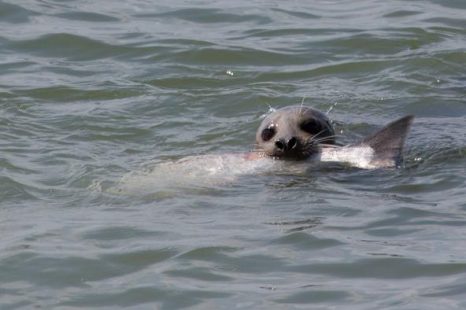
Study says predators may play major role in chinook salmon declines
A new study shows that increased populations of seals and sea lions are eating far more of Puget Sound’s threatened chinook than previously known, potentially hampering recovery efforts for both salmon and endangered killer whales. Seals and sea lions are eating about 1.4 million pounds of Puget Sound chinook each year — about nine times more than they were eating in 1970, according to the report, published online this month in the Canadian Journal of Fisheries and Aquatic Sciences. Most of these chinook are small fish migrating to the ocean, which ultimately reduces the number of adults returning to Puget Sound. The study estimates that seals and sea lions are decreasing potential returns by about 162,000 adult chinook each year. That’s twice the number eaten by killer whales and roughly six times as many as caught in Puget Sound by tribal, commercial and recreational fishers combined. Read the rest of the story here 21:16
The North Pacific Fishery Management Council Meeting in Seattle, WA January 30 thru February 6, 2017
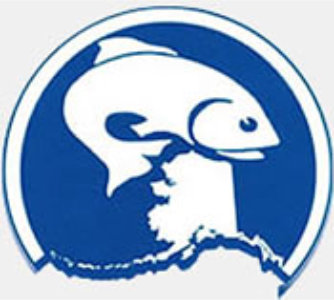 The North Pacific Fishery Management Council will begin their meeting week on Monday, January 30, and continue through Monday February 6, 2017 at the Renaissance Seattle Hotel, 515 Madison Street, Seattle, WA. The AGENDA and SCHEDULE are now available. Meeting FAST FACTS. The Council’s meeting will be broadcast live beginning February 1, 2017 via Adobe Connect Listen Online. Visit the NPFMC Website, Click here 20:35
The North Pacific Fishery Management Council will begin their meeting week on Monday, January 30, and continue through Monday February 6, 2017 at the Renaissance Seattle Hotel, 515 Madison Street, Seattle, WA. The AGENDA and SCHEDULE are now available. Meeting FAST FACTS. The Council’s meeting will be broadcast live beginning February 1, 2017 via Adobe Connect Listen Online. Visit the NPFMC Website, Click here 20:35
ASMFC Winter Meeting – January 30 – February 2, 2017 in Alexandria, Virginia
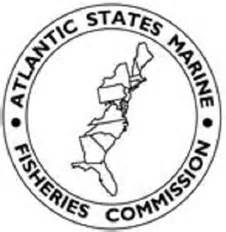 Final Agenda, Click here For ease of access, all Board/Section meeting documents, with the exception of the Shad & River Herring Board materials and the submitted public comment portion of the Atlantic Menhaden Board materials, have been combined into two documents – Main Meeting Materials 1 and Main Meeting Materials 2. Main Meeting Materials 1 includes all boards/sections meeting on January 31 and Main Meeting Materials 2 are materials for the remainder of the week. Additionally, supplemental materials have been combined into document – Supplemental Materials. Links to individual board/committee materials can be found below. Board/Section meeting proceedings will be broadcast daily via webinar beginning at 8:00 a.m. on January 31st and continuing daily until the conclusion of the meeting (expected to be 3:00 p.m.) on Thursday February 2nd. The webinar will allow registrants to listen to board/section deliberations and view presentations and motions as they occur. Click here for access. 19:57
Final Agenda, Click here For ease of access, all Board/Section meeting documents, with the exception of the Shad & River Herring Board materials and the submitted public comment portion of the Atlantic Menhaden Board materials, have been combined into two documents – Main Meeting Materials 1 and Main Meeting Materials 2. Main Meeting Materials 1 includes all boards/sections meeting on January 31 and Main Meeting Materials 2 are materials for the remainder of the week. Additionally, supplemental materials have been combined into document – Supplemental Materials. Links to individual board/committee materials can be found below. Board/Section meeting proceedings will be broadcast daily via webinar beginning at 8:00 a.m. on January 31st and continuing daily until the conclusion of the meeting (expected to be 3:00 p.m.) on Thursday February 2nd. The webinar will allow registrants to listen to board/section deliberations and view presentations and motions as they occur. Click here for access. 19:57
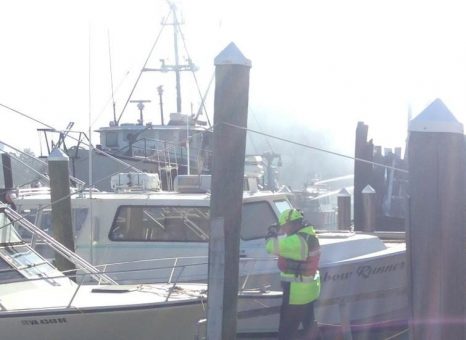
Trawler Damaged – Two suffer minor injuries in large fire in downtown Hampton
Hampton firefighters battled blazes at a seafood packaging warehouse and commercial fishing boat in the 100 block of King Street in downtown Sunday morning. Two people suffered minor injuries as a result of the blaze, and the warehouse was heavily damaged, according to a fire official. The flames coming from the warehouse reached nearby boats, Chittum said, and one boat was damaged by fire. However it was moved from the warehouse, protecting it from the further burns. After the flames on the boat were under control, firefighters used the boat as a platform to fight the warehouse blaze, Chittum said. The boat had visible charring to its right side, which was facing the warehouse. (Trusted sources confirm the vessel is the F/V Darana R out of Wanchese N.C.) Photo gallery, read the rest here 19:13
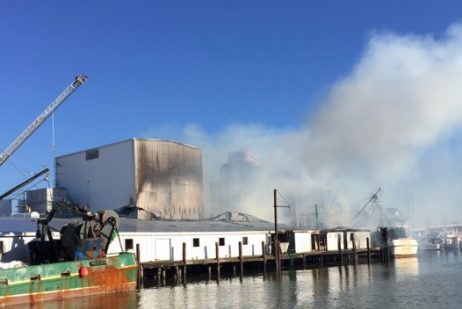
BREAKING: 2nd alarm warehouse and boat fire in Hampton Va.
Hampton Fire crews are battling a heavy 2nd alarm warehouse fire at Amory’s Seafood in the 100 block of South King Street Sunday morning. Dispatch received the call around 8:18 a.m. Hampton Fire tweeted a commercial fishing boat has also caught fire. This is a breaking story. More details when available! Click here for photo’s 11:38:03
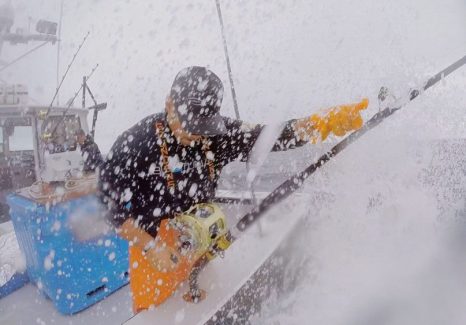
When the water turns wicked
When it comes to being on the ocean – whether you’re a commercial fisherman out there making a living, a sport fisherman on the briny blue for a day of rod-and-reel action, or a diehard powerboat cruiser – there is always one factor that plays a crucial role in everything you do: the weather. We asked four well-known and seasoned professional captains how they plan for and handle heavy weather when at sea. All four are showcased on National Geographic Channel’s hit television show, “Wicked Tuna,” and each is a top-notch giant bluefin tuna fisherman and consummate seaman. Here’s what they have to say about managing their vessels in the often-nasty conditions of the North Atlantic Ocean. And here are their respective preferred tactics and strategies, stored in their memory banks after years of sea time in their rugged little tuna boats. Read this article by Shelley Fleming-Wigglesworth click here 10:13

Autonomous Ships – If Rolls-Royce has its way, commercial vessels will soon have no crew on board
It’s midnight on the North Atlantic, where a massive container ship receives the latest weather report. There’s a nasty storm brewing ahead. Quietly, the ship changes course and speed, to skirt the worst of it and ensure an on-time arrival at its destination. The ship’s owners and the harbormaster at its next port of call are advised of the revised route. And as it nears shore, the giant ship must correct course once again, this time to steer clear of a fishing vessel off its starboard bow. Just another day for trans-Atlantic shipping, it might seem. In fact, it’s not. You see, this ship has no one aboard. It’s commanded from an operating center on the other side of the world, where technicians are monitoring and controlling this vessel and others like it through a satellite data link—that is, when the ship isn’t just controlling itself. Although robotic ships of this sort are some ways off in the future, it’s not a question of if they will happen but when. Read the story here 09:47



































